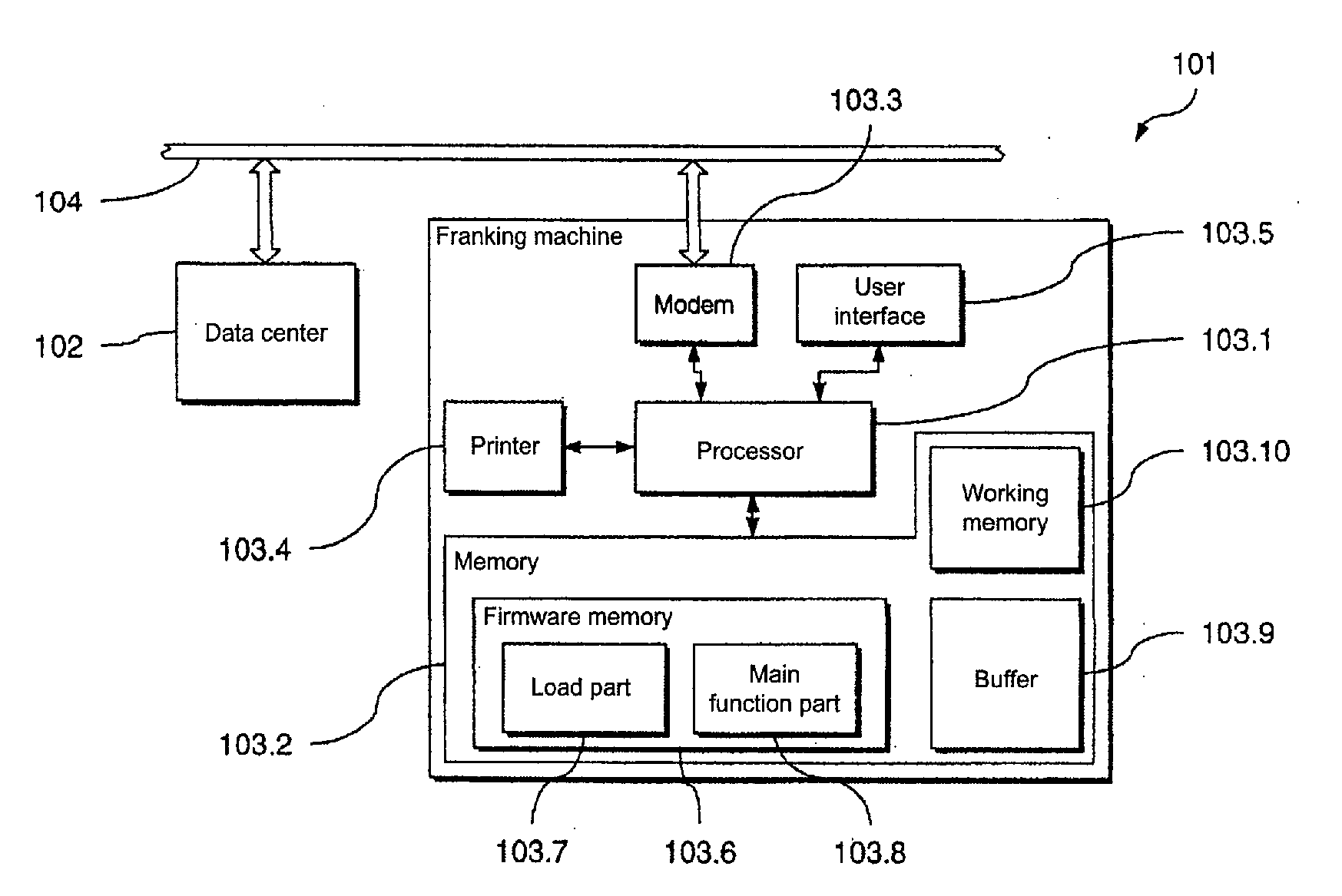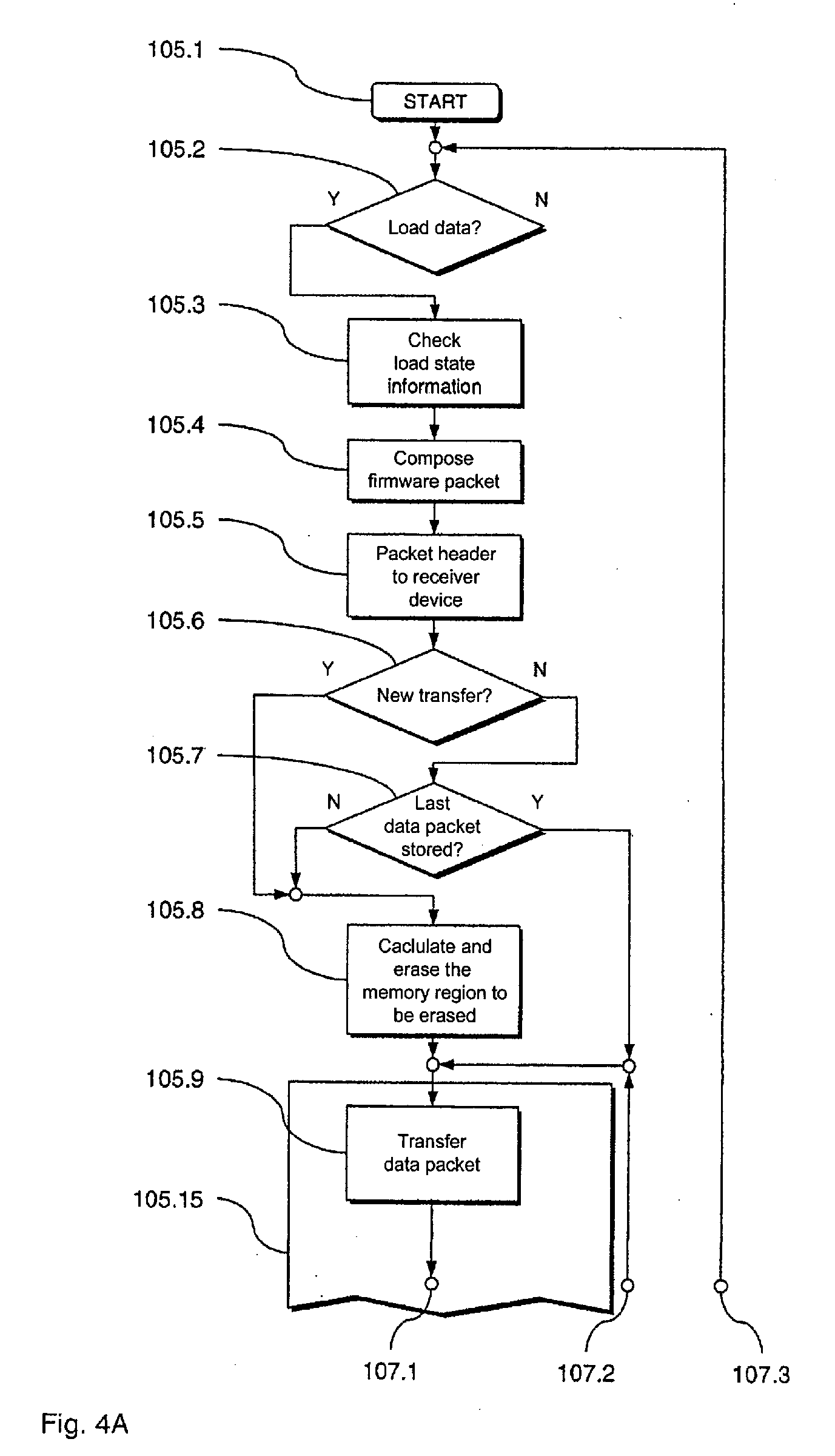Arrangement and method for loading data into a memory
- Summary
- Abstract
- Description
- Claims
- Application Information
AI Technical Summary
Benefits of technology
Problems solved by technology
Method used
Image
Examples
Embodiment Construction
[0046]In the following, a preferred embodiment of the inventive arrangement 101 for loading of data from a transmitter device (in the form of a data center 102) into a receiver device (in the form of a franking machine 103) is described with reference to FIGS. 1 through 4B. With this preferred embodiment a preferred embodiment of the inventive method for loading of data is implemented. The franking machine 103 can be connected with the remote data center 102 via a communication network 104.
[0047]The franking machine 103 includes a processor 103.1 in the form of a microprocessor and a memory 103.2 connected therewith. The franking machine 103 can be connected with the communication network 104 (and therewith with the data center 102) via a modem 103.3 connected with the processor 103.1. Furthermore, the franking machine 103 comprises a printing device 103.4 by means of which franking imprints can be generated as well as a user interface 103.5 (for example display and keyboard) via wh...
PUM
 Login to View More
Login to View More Abstract
Description
Claims
Application Information
 Login to View More
Login to View More - R&D
- Intellectual Property
- Life Sciences
- Materials
- Tech Scout
- Unparalleled Data Quality
- Higher Quality Content
- 60% Fewer Hallucinations
Browse by: Latest US Patents, China's latest patents, Technical Efficacy Thesaurus, Application Domain, Technology Topic, Popular Technical Reports.
© 2025 PatSnap. All rights reserved.Legal|Privacy policy|Modern Slavery Act Transparency Statement|Sitemap|About US| Contact US: help@patsnap.com



